Gold Laser Marking Machine
SuperbMelt gold engraving machine is an essential tool for jewelry engraving craftsmanship

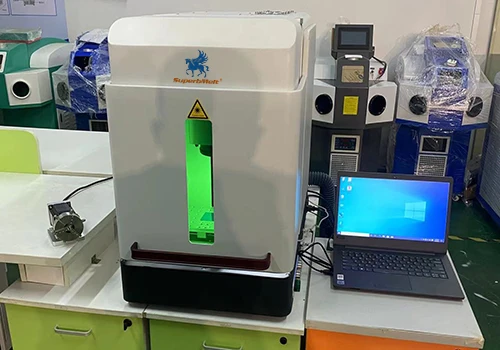
Gold Laser Marking Machines are specifically designed for marking, engraving, or etching designs, text, logos, or patterns on gold and other precious metals. These machines create artistic engravings for luxury gold items or collectibles and are widely used in the jewelry industry, high-end manufacturing, and luxury brand sectors due to their precision and reliability.
Using laser technology, these machines can create permanent and detailed markings without physical contact with the surface, ensuring high accuracy and minimal material loss, which helps reduce costs for businesses.
SuperbMelt offers a variety of Gold Laser Marking Machines ranging from 20W to 50W to meet the diverse needs of businesses. For more details, contact SuperbMelt today!
| Type: | Mini Laser Engraving Machine For Metal | 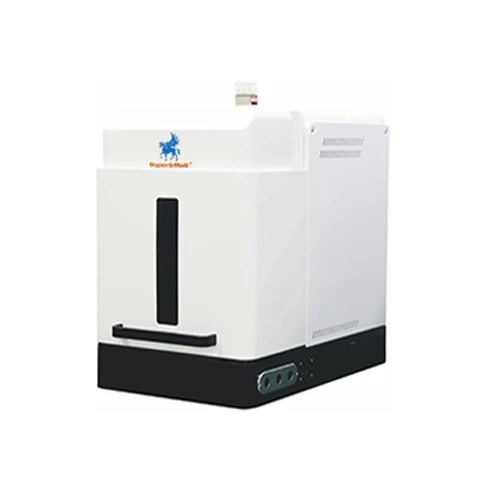 |
| Model Number: | FLMM-series | |
| Laser power: | 20W/30W/50W | |
| Marking range: | 100mm×100mm | |
| Marking speed: | ≤10000mm/s | |
| Power supply: | AC220V±10%/50Hz | |
| Cooling method: | Air-cooled | |
| Positioning method: | Red ray positioning | |
| Accessibility: | 3 red ray assisted focus | |
| Lifting stroke: | 250mm |
Features:
- High Precision: The machine boasts outstanding engraving precision, ensuring detailed and accurate results.
- Multi-functionality: It’s a versatile tool, capable of engraving various designs, patterns, and text, making it suitable for a wide range of applications.
- Ease of Customization: The machine allows for personalized and customized designs, catering to different industry needs.
- User-Friendly Operation: Designed for user-friendliness, even individuals new to laser engraving can easily operate it.
- Broad Material Compatibility: It can mark and engrave on various materials, including metals, wood, leather, textiles, and more.
Advantages:
- High-Quality Engraving: Ensures high-quality and visually appealing engravings on jewelry and other items.
- Durable and Long-lasting: The machine is known for its durability and long-term performance, offering reliability for various applications.
- Increased Aesthetics: Enhances the visual appeal of jewelry and other products, adding value to the finished items.
- Efficiency: The machine’s fast operation speeds contribute to increased productivity, making it an ideal choice for industries with high engraving demands.
- Versatility: With its ability to work on a wide range of materials, it serves as a flexible tool for diverse industries.
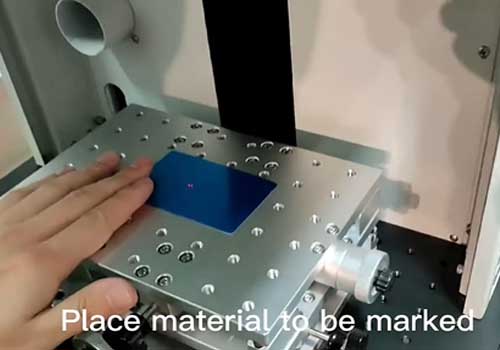
Laser Jewelry Engraving Machine Marking Table
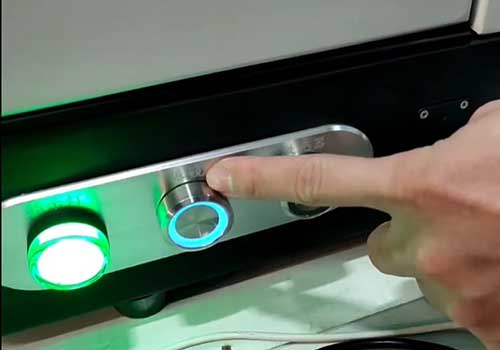
Desktop laser switch starter
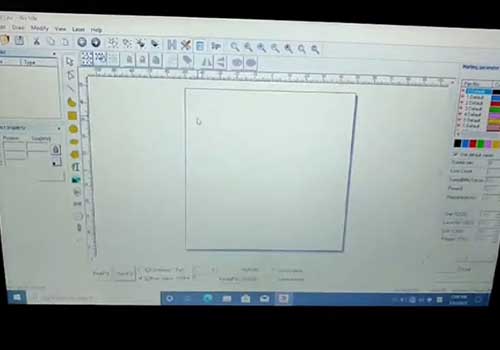
The small jewelry laser engraving machine can handle three file formats: DXF, TLP, and AI for printing.
Why SuperbMelt Gold Laser Marking Machine



Any Question About SuperbMelt Gold Laser Marking Machine
Gold Laser Marking Machine Guide in the Industry
Applications in the Jewelry Industry
1.1, Add personalized engraving to rings, necklaces, bracelets, etc.
A gold laser marking machine enables precise and permanent customization on various jewelry pieces such as rings, necklaces, bracelets, and pendants. Whether it’s engraving a customer’s name, special date, meaningful quote, or unique pattern, this machine allows jewelers to deliver highly personalized designs with exceptional accuracy. The result is a one-of-a-kind piece that holds both emotional and artistic value, ideal for gifts, commemorative items, and branded collections.
1.2, Process customized gifts (gold medals, commemorative coins)
- 1. Why Use a Laser Marking Machine for Gold Gifts?
Permanent & High-Quality Markings: Laser engraving creates scratch-proof, fade-resistant designs.
Fine Details: Perfect for intricate logos, text, serial numbers, or portraits.
No Contact Process: No physical pressure, ensuring no damage to delicate gold surfaces.
Customizable: Works with 24K gold, gold-plated items, and gold alloy medals/coins.
- 2. Types of Gold Items Suitable for Laser Marking
Gold Medals (Sports, Awards, Trophies)
Commemorative Coins (Corporate, Military, Event Souvenirs)
Jewelry (Gold Rings, Pendants)
Plaques & Nameplates
- 3. Laser Marking Process for Gold Gifts
Step 1: Design Preparation
Use vector-based software (CorelDraw, AutoCAD, Adobe Illustrator) to create the desired text, logo, or artwork.
Common engravings:
Names, dates, event details
Serial numbers (for limited editions)
QR codes (for authenticity verification)
Intricate patterns or portraits
Step 2: Machine Setup
Fiber Laser (Best for Metals): 20W–50W fiber lasers are ideal for gold marking.
Parameters Adjustment:
Power: Medium to high (depends on gold thickness)
Speed: Slower for deeper marks
Frequency: Higher for finer details
Step 3: Laser Marking
The laser beam removes the top layer of gold, creating a contrasting mark (dark or bright, depending on settings).
For gold-plated items, the laser can expose the base metal (e.g., brass, stainless steel) for a two-tone effect.
Black Marking Option: Using special settings, the laser can create a black oxidized finish for high contrast.
Step 4: Post-Processing (Optional)
Polishing: For a smoother finish.
Cleaning: Remove any residue with alcohol or ultrasonic cleaning.
Protective Coating: Apply lacquer to prevent tarnishing.
- 4. Advantages Over Traditional Engraving
✔ Higher Precision – Can engrave micro-text and complex graphics.
✔ Faster Production – Takes seconds per piece, ideal for bulk orders.
✔ No Tool Wear – Unlike mechanical engraving, lasers don’t degrade.
✔ Eco-Friendly – No chemicals or inks required.
- 5. Applications in Customized Gifts
Corporate Awards: Employee recognition, anniversary coins.
Sports Trophies: Gold medals with winner names & dates.
Memorial Coins: Military, graduation, or event souvenirs.
Luxury Branding: High-end jewelry & limited-edition collectibles.
6. Choosing the Right Laser Machine
Fiber Laser Markers (Best for metals)
MOPA Lasers (For color marking on gold)
UV Lasers (For delicate gold-plated items)
1.3, Mark anti-counterfeiting numbers and anti-copying laser codes
1. Types of Anti-Counterfeiting Laser Markings
A. Serial Numbers & Unique IDs
Each item gets a unique alphanumeric code (e.g., “AU-2024-00123”).
Can be linked to a database for verification.
B. QR Codes / Data Matrix Codes
Stores encrypted product info (manufacturer, date, batch).
Scannable via smartphone for instant authentication.
C. Micro-Text & Hidden Engravings
Tiny text (0.1mm or smaller) invisible to the naked eye.
Requires magnification to verify.
D. Holographic Laser Marks (Nanostructuring)
Creates light-diffracting patterns that change appearance at different angles.
Extremely difficult to replicate.
E. Invisible UV Marks
Only visible under UV light (used for covert security).
2. How Laser Marking Prevents Counterfeiting
✔ Permanent & Tamper-Proof – Cannot be erased or altered.
✔ High Precision – Tiny, complex codes that are hard to copy.
✔ No Contact Method – No risk of damaging delicate gold items.
✔ Automated Traceability – Enables blockchain or database tracking.
3. Process for Laser Marking Anti-Counterfeiting Codes
Step 1: Generate Secure Codes
Use encrypted serialization software to create unique IDs.
Options: Sequential numbers, randomized codes, or encrypted data.
Step 2: Laser Engraving
Fiber or UV Laser marks the code with high precision.
Parameters:
Low power for subtle micro-text.
High speed for QR/data matrix codes.
Pulse frequency adjusted for depth.
Step 3: Verification System Setup
Link codes to a cloud database or blockchain ledger.
Customers scan QR codes to verify authenticity.
Step 4: Anti-Copying Features (Optional)
Nano-engraved patterns – Only visible under microscope.
Color-changing marks – MOPA lasers create rainbow effects.
Hidden watermarks – Embedded logos or text.
4. Applications in Gold & Luxury Items
Commemorative Coins – Prevent fake replicas.
Gold Medals & Awards – Ensure only genuine products are awarded.
High-End Jewelry – Combat counterfeit luxury items.
Limited Edition Collectibles – Track ownership and provenance.
5. Best Laser Machines for Anti-Counterfeiting
| Laser Type | Best For | Example Use Case |
|---|---|---|
| Fiber Laser | Deep serial numbers, QR codes | Gold medals, coins |
| UV Laser | Micro-text, invisible marks | High-security jewelry |
| MOPA Laser | Color-changing engravings | Luxury branding |
| Picosecond Laser | Nanostructured holograms | Ultra-secure government coins |
6. Advantages Over Traditional Methods
Hard to Replicate – Lasers create ultra-fine details.
No Wear & Tear – Unlike ink stamps or embossing.
Automation-Friendly – Batch marking with unique IDs.
Eco-Friendly – No inks or chemicals.
Why Laser Marking is Preferred Over Traditional Methods
Imagine holding a 24K pure gold medal in your hands—perhaps an Olympic champion’s pride or a company’s lifetime achievement award. How do you make such an honor last forever?
In the past, artisans painstakingly carved with chisels, but the metal could warp, and the engravings would fade. Later came mechanical engraving, yet intricate designs often left the machines struggling. And let’s not forget those ink-printed serial numbers that would eventually wear off…
Then came laser marking—like magic for medals:
A beam of light flashes, etching a microscopic 0.01mm anti-counterfeit code, nearly impossible to replicate even under a magnifying glass
The gold surface remains untouched, yet permanently bears the winner’s name and a unique QR code
Laser heads hum along production lines, personalizing thousands of medals per day, each with distinct designs
No toxic chemicals, no metal debris—just flawlessly crisp, enduring markings
This is why high-end custom gifts now rely on laser engraving. It doesn’t just preserve each piece’s uniqueness—it turns prestige into permanence. When winners trace their fingers over the laser-engraved ridges, they’re touching a perfect fusion of tradition and cutting-edge technology.
2.1, No contact, no damage to the surface
Unlike traditional engraving that risks scratches and pressure marks, laser technology delivers flawless personalization through pure light. A single beam dances across your gold surface—no physical contact, no compromise to its pristine finish. The result? Crystal-clear markings that preserve every micron of your medal’s original brilliance while adding permanent distinction.
This is the art of invisible craftsmanship: all the prestige of deep engraving, none of the wear. Your treasures remain untouched, yet transformed forever.
“Where light writes, value remains pristine.”
[Would you like to explore specific laser solutions for your golden creations?]
2.2, Permanent marking, no fading, no shedding
Beneath the surface of every laser-marked gold piece lies an extraordinary metallurgical transformation. Through precisely controlled photothermal energy, our nanosecond-pulsed lasers induce a permanent structural reorganization at the atomic level:
Selective Surface Modification
The laser’s 1064nm wavelength targets gold’s electron clouds, generating 8,000°C micron-scale plasma that:
• Vaporizes surface oxides
• Creates permanent grain boundary realignment
• Forms sub-surface alloyed layers when marking gold-plated itemsSelf-Protective Oxidation
The process generates an ultra-thin (50-100nm) oxidation layer that:
• Bonds chemically with the base material
• Develops natural corrosion resistance
• Maintains contrast stability through nanocrystalline restructuringDepth-Controlled Fusion
Our MOPA lasers achieve 5-200μm penetration by:
• Adjusting pulse duration (20-200ns)
• Modulating frequency (20-100kHz)
• Controlling thermal diffusion to prevent collateral annealing
Why This Matters for Heirloom Quality:
• No adhesives = No delamination risk
• Sub-surface modification = No abrasive wear
• Oxide integration = Natural UV resistance
Trends in Gold Laser Marking
3.1, Miniaturized and portable models are becoming increasingly popular
As demand grows for on-site personalization and mobile engraving solutions, miniaturized laser systems are revolutionizing how we mark precious metals. These portable powerhouses now deliver:
Engineering Breakthroughs Enabling Mobility:
• Fiber Laser Miniaturization – New ceramic-core modules shrink 50W systems to briefcase size
• Air-Cooled Operation – Phase-change thermal management eliminates bulky chillers
• Smart Beam Delivery – 7-axis robotic arms with <5μm repeatability in compact form factors
Transformational Applications:
✓ Field Medal Engraving – Olympic committees now personalize awards during ceremonies
✓ VIP Jewelry Services – High-end retailers offer instant engraving in private viewing rooms
✓ Security Authentication – Bank inspectors verify gold reserves with on-site serial marking
Performance That Defies Size:
▸ Same 20μm precision as industrial systems
▸ 304 stainless steel housing withstands harsh environments
▸ AI-assisted focus control maintains marking depth consistency
3.2, The addition of AI+graphic recognition marking system
The integration of AI vision systems with laser marking technology has revolutionized precision engraving, creating a new standard for smart manufacturing. Our advanced AI+graphic recognition marking systems combine deep learning algorithms with high-speed cameras to deliver unprecedented accuracy and efficiency.
How It Works:
Smart Pattern Recognition
AI instantly analyzes surfaces, detects imperfections, and auto-corrects engraving paths in real time
Compensates for curved, uneven, or textured gold surfaces with sub-10μm precision
Adaptive Laser Control
Dynamically adjusts power/speed based on material reflectivity and thickness
Self-learning algorithms optimize marking quality over continuous production runs
Automated Quality Assurance
In-line vision inspection verifies every mark against CAD designs
Flags defects and triggers auto-rework without operator intervention
Industry-Changing Applications:
✔ Personalized Luxury Goods – Perfectly centered engravings on irregular jewelry surfaces
✔ Anti-Counterfeit Tags – AI-generated micro-text patterns with cryptographic security
✔ Mass Customization – Instant design switching between unique pieces
3.3, Opening up to fully automated production lines
The future of precision engraving has arrived with end-to-end automated laser marking systems that seamlessly integrate AI, robotics, and IoT connectivity. Our next-generation solutions are redefining industrial production through:
Core Innovations Powering Autonomy
Intelligent Material Handling
Robotic arms with 3D vision guidance auto-load/unload items 24/7
Conveyor systems with weight sensing and auto-positioning for mixed-batch processing
Closed-Loop Process Control
Real-time spectral analysis monitors mark quality during engraving
Self-correcting lasers adjust parameters every 0.1ms based on thermal feedback
Cognitive Manufacturing Cloud
Central AI predicts maintenance needs via vibration/acoustic sensors
Blockchain-tracked production data ensures full quality traceability
Transformational Production Scenarios
Lights-Out Factories – Unattended overnight gold medal production
Mass Customization – Instant switch between 500+ engraving designs
Zero-Defect Output – 100% automated optical inspection rejection
FAQ Guide of Gold Laser Marking Machine
- 1. Which laser machine is best for gold jewellery engraving?
- 2. What is the difference between laser marking and laser etching?
- 3. Can you laser engrave jewellery?
- 4. Can sterling silver be laser engraved?
- 5. Can you laser engrave gemstones?
- 6. Does laser engraving on metal wear off?
- 7. Do you need to passivate after laser marking?
- 8. Is there a warranty or support available for this machine?
- 9. Can this machine handle batch production?
- 10. Is training required to operate this machine?
1. Which laser machine is best for gold jewellery engraving?
The best laser machine for gold jewelry engraving is typically a Fiber Laser Marking Machine. This type of laser machine is widely preferred due to its precision, speed, and ability to engrave intricate designs on delicate materials like gold. Below are some key features that make fiber lasers ideal for gold jewelry engraving:
1. High Precision
- Fiber lasers can engrave detailed patterns, logos, or text with exceptional accuracy, which is crucial for fine gold jewelry.
2. Non-Contact Marking
- The laser beam does not physically touch the jewelry, preventing surface damage or distortion.
3. Minimal Material Loss
- Fiber lasers remove only a tiny layer of gold during engraving, preserving the material.
4. Speed and Efficiency
- These machines can engrave at high speeds, improving production efficiency without sacrificing quality.
5. Durable and Permanent Marks
- Fiber lasers create lasting engravings that won’t fade or wear off over time.
6. Versatility
- Suitable for engraving various shapes and sizes of jewelry, including rings, pendants, bracelets, and more.
Recommended Machine:
SuperbMelt Fiber Laser Marking Machine
SuperbMelt offers a range of laser machines with customizable power options (e.g., 20W, 30W, 50W) to suit your specific jewelry engraving needs. These machines are user-friendly, highly efficient, and designed for long-term performance.
For more information on the best laser engraving machines for gold jewelry, contact SuperbMelt today!
2. What is the difference between laser marking and laser etching?
The main difference between laser marking and laser etching lies in the depth of material modification and the process used to create the mark:
1. Laser Marking
- Process: Alters the material’s surface without removing any material. It creates marks through oxidation, discoloration, or annealing.
- Depth: Superficial (no significant material removal).
- Appearance: Produces high-contrast, smooth marks, often in black or white.
- Applications:
- Ideal for barcodes, serial numbers, logos, and text.
- Commonly used on metals, plastics, and ceramics.
- Advantages:
- Non-invasive and maintains the material’s integrity.
- Excellent for applications where surface smoothness is critical.
2. Laser Etching
- Process: Uses a laser to melt the material’s surface, causing it to expand and form a slightly raised mark.
- Depth: Penetrates deeper than marking but is shallower than engraving.
- Appearance: Creates a textured, raised mark with high durability.
- Applications:
- Often used for decorative purposes, part numbers, or industrial marking.
- Works on metals, plastics, and coated surfaces.
- Advantages:
- Faster than engraving.
- Creates durable and visible marks suitable for moderate wear.
Key Differences:
| Aspect | Laser Marking | Laser Etching |
|---|---|---|
| Material Removal | None | Slight material removal |
| Depth | Very shallow | Shallow (slightly raised) |
| Durability | High (depends on process) | Higher than marking |
| Use Case | Identification and traceability | Decoration or moderate wear marks |
Conclusion:
- Choose Laser Marking if you need a smooth, non-invasive, high-contrast mark for identification or branding.
- Choose Laser Etching for applications requiring slightly textured, durable marks that stand out more visually.
3. Can you laser engrave jewellery?
Yes, jewelry can be laser engraved. Laser engraving is a precise and versatile method to create detailed and permanent designs, patterns, text, or logos on various types of jewelry made from metals like gold, silver, platinum, and stainless steel. It is commonly used for personalizing jewelry, adding intricate details, or creating brand logos on high-end pieces.
Benefits of Laser Engraving for Jewelry:
- High Precision: Laser engraving allows for highly detailed and intricate designs that are impossible with traditional engraving methods.
- Durability: The engraving is permanent and resistant to wear, ensuring longevity.
- Versatility: Suitable for various materials, including precious metals, gemstones, and even non-metallic surfaces like wood or acrylic used in mixed-material jewelry.
- Speed: Laser engraving is faster than traditional methods, making it ideal for mass production or time-sensitive customization.
- No Contact Process: Reduces the risk of damaging delicate jewelry pieces.
Common Applications:
- Personalization: Names, initials, special dates, or messages.
- Branding: Logos or insignias for jewelry designers and manufacturers.
- Design Enhancements: Decorative patterns or textures.
- Serial Numbers: For tracking or certification purposes in high-value items.
Laser engraving has become a standard practice in the jewelry industry due to its accuracy, efficiency, and ability to cater to both personal and commercial needs.
4. Can sterling silver be laser engraved?
Yes, sterling silver can be laser engraved. Laser engraving is an ideal method for creating intricate and permanent designs, text, or logos on sterling silver due to its precision and efficiency. Sterling silver, composed of 92.5% silver and 7.5% other metals (usually copper), is a durable material that responds well to laser engraving.
Why Laser Engrave Sterling Silver?
- High Precision: Laser engraving allows for detailed and intricate designs, making it perfect for personalization or decorative elements.
- Durable Markings: The engraving is permanent and does not wear off easily, ensuring long-lasting results.
- Minimal Material Loss: Laser engraving is a non-contact process, reducing the risk of damaging the silver surface or wasting material.
- Versatility: Suitable for a variety of applications, such as jewelry, commemorative items, and customized gifts.
- Aesthetic Appeal: Laser engraving creates clean and sharp markings that enhance the overall appearance of the item.
Applications:
- Personalized Jewelry: Names, dates, or meaningful messages on rings, necklaces, or bracelets.
- Corporate Branding: Logos or promotional designs on silver products.
- Luxury Items: High-end silverware or accessories with decorative patterns.
- Awards & Keepsakes: Customized plaques or trophies.
Sterling silver’s smooth and reflective surface makes it particularly suitable for laser engraving, ensuring the designs are highly visible and aesthetically pleasing.
5. Can you laser engrave gemstones?
Yes, gemstones can be laser engraved, but the feasibility depends on the type of gemstone and the engraving method. Laser engraving is commonly used on harder, durable gemstones, such as diamonds, quartz, and sapphires. The laser precisely etches designs, text, or patterns on the gemstone’s surface without requiring physical contact.
Key Considerations for Laser Engraving Gemstones:
Type of Gemstone:
- Hard Gemstones (e.g., diamonds, rubies, sapphires): Can withstand the high heat of a laser and are ideal for engraving.
- Soft or Porous Gemstones (e.g., turquoise, opals, pearls): More delicate and may require specialized techniques or lower laser power to avoid damage.
Engraving Purpose:
- Personalization: Adding names, dates, or unique designs to jewelry.
- Branding: Engraving logos or identification marks.
- Security: Unique identifiers, especially on diamonds, for certification and tracking purposes.
Engraving Depth:
- Shallow surface markings are common to avoid compromising the gemstone’s structural integrity.
- Deep engravings might not be suitable for all gemstones due to the risk of cracking or weakening.
Laser Type:
- Fiber Lasers: Effective for hard gemstones like diamonds.
- CO2 Lasers: Often used for softer materials but are less commonly employed on gemstones due to their lower intensity.
Advantages of Laser Engraving Gemstones:
- Precision: Achieves intricate and fine details that are hard to replicate with traditional methods.
- Durability: The markings are permanent and resistant to wear.
- Non-Invasive: No direct contact with the gemstone minimizes the risk of physical damage.
- Versatility: Works on various shapes and sizes of gemstones.
Applications:
- Jewelry Personalization: Rings, pendants, or bracelets with custom designs.
- Diamond Inscription: Unique identifiers or certification marks on diamond girdles.
- High-End Branding: Logos or artistic engravings on gemstone pieces.
- Commemorative Items: Special occasions or gifts marked with meaningful messages.
While laser engraving gemstones requires specialized equipment and expertise, it offers unmatched precision and aesthetic quality for enhancing or personalizing gemstone jewelry.
6. Does laser engraving on metal wear off?
Laser engraving on metal does not easily wear off because it creates permanent markings by altering the metal’s surface. The durability depends on the engraving technique and the type of metal. Here’s an explanation:
Why Laser Engraving on Metal is Durable
Permanent Markings: Laser engraving melts or vaporizes the top layer of the metal, creating an etching or mark that is physically part of the material.
- Unlike surface coatings like paint, engraving doesn’t chip or peel.
Resistant to Wear: Laser-engraved markings are highly resistant to:
- Scratching: Engravings are often recessed, making them difficult to damage through abrasion.
- Fading: Since no ink or dye is used, there’s nothing to fade or discolor.
- Environmental Exposure: They can withstand high temperatures, moisture, and corrosion.
Metal Type: Some metals, like stainless steel or titanium, retain engravings better than softer metals like aluminum.
Situations Where Wear Might Occur
- Heavy Abrasion: Repeated friction (e.g., rubbing against other objects) can erode shallow engravings over time.
- Corrosive Environments: If the metal itself corrodes, the engraving might degrade along with the material.
- Shallow Marking Depth: Laser etching (lighter, surface-level marking) can wear off faster than deeper engraving.
How to Ensure Longevity
- Choose the Right Laser Power: For industrial or jewelry applications, deeper engravings last longer than shallow ones.
- Select Durable Metals: Harder metals are better for permanent engravings.
- Apply Protective Coatings: A clear coating can protect against harsh environments without obscuring the engraving.
In conclusion, laser engraving on metal is highly durable and resistant to wear under normal conditions, making it a preferred method for creating long-lasting marks on jewelry, tools, and industrial equipment.
7. Do you need to passivate after laser marking?
Passivation after laser marking is sometimes necessary, depending on the material being marked and its intended application. Passivation is a chemical process that removes contaminants and enhances the corrosion resistance of metals, especially stainless steel. Here’s a detailed explanation:
When to Passivate After Laser Marking
Marking Stainless Steel:
- Laser marking can expose free iron or other impurities on the surface of stainless steel.
- Passivation removes these impurities, preventing rust and preserving the steel’s corrosion resistance.
Applications in Harsh Environments:
- For items exposed to moisture, chemicals, or extreme conditions (e.g., medical tools, marine equipment), passivation ensures durability.
Compliance with Standards:
- Industries such as medical, aerospace, and food processing often require passivation to meet strict regulatory standards.
When Passivation May Not Be Necessary
- Non-Corrosive Environments:
- If the marked item is used indoors or in dry environments, passivation might not be needed.
- Certain Laser Marking Techniques:
- Advanced marking methods, like annealing, do not remove surface material and leave the metal’s protective oxide layer intact, reducing the need for passivation.
How Passivation Works
- The process typically involves immersing the item in a solution like nitric acid or citric acid.
- This removes free iron and other contaminants, allowing a protective chromium oxide layer to form naturally on the surface.
Advantages of Post-Laser Marking Passivation
- Enhanced corrosion resistance.
- Removal of potential contaminants.
- Compliance with industry standards (e.g., ASTM A967 or ISO 16048).
Conclusion
Passivation after laser marking is recommended for stainless steel and applications requiring high corrosion resistance. For other metals or controlled environments, it may not be necessary, but consulting with material specifications and application requirements is key.
8. Is there a warranty or support available for this machine?
SuperbMelt typically provides warranty and customer support for their machines. Please refer to the manufacturer for specific details.
9. Can this machine handle batch production?
Yes, it is suitable for batch production in jewelry and other industries, offering efficiency and consistency.
10. Is training required to operate this machine?
Basic training is recommended to understand the machine’s functions and capabilities. SuperbMelt may offer training or guidance.
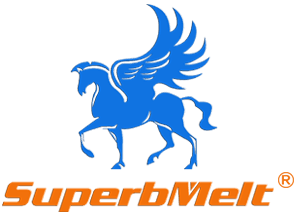
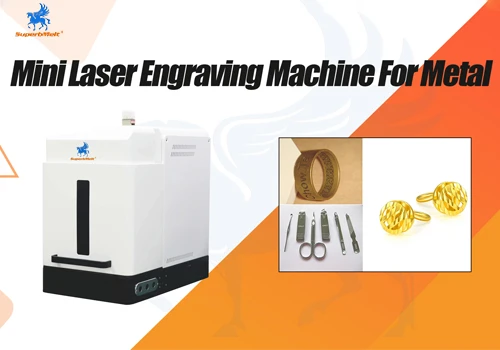

 © Copyright 2008-2021 Superb Electromachinery Co., Limited
© Copyright 2008-2021 Superb Electromachinery Co., Limited